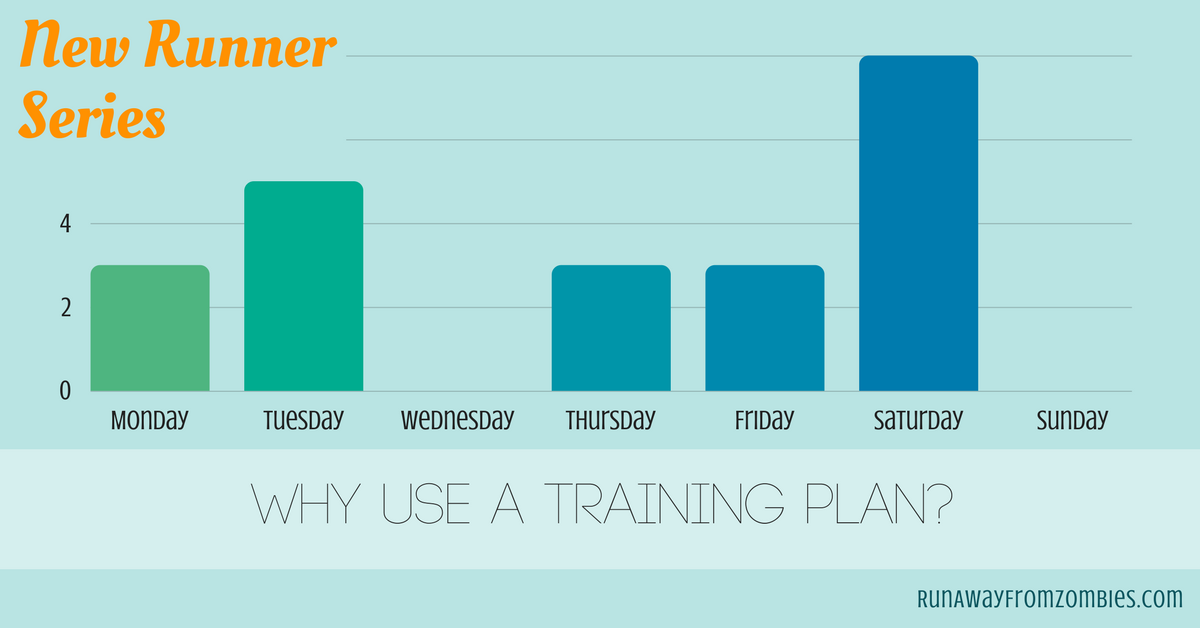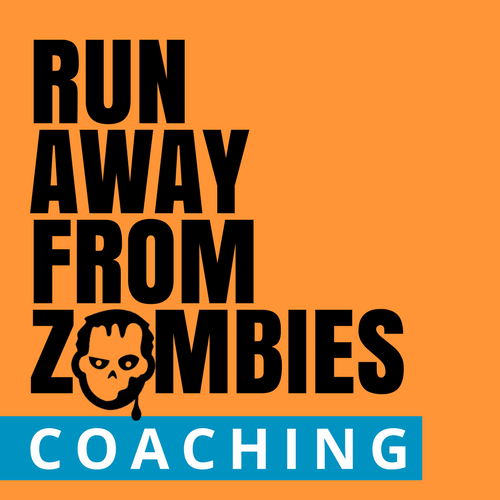Maybe you’ve had intentions of picking out a running plan. Maybe you’ve even followed one for a couple of weeks. But then life got in the way. You’re still running a few times a week. So, what’s the difference?
Here are 10 benefits you’re missing out on without a running plan.

10 Reasons to Love a Running Plan
1. Define a Nebulous Goal
When we’re not pressed, oftentimes our goals are pretty vague. We want to run more often or be able to run further with less walking breaks.
But when you pick a “5K to 10K Plan” – with one fell swoop, you have defined your nebulous goal of running further to something measurable with a defined timeline.
When you choose a running plan with speedwork and races – you have found a way to get faster and how to measure it.
And at the end of those 8-12 weeks, I bet you make more progress than if you didn’t nail down your goal and choose a running plan.
2. Break Through a Plateau
We often get stuck doing the same workout over and over again – same distance, same pace.
When that happens, our body becomes efficient at that workout. It does it in the least amount of calories burned and our brain doesn’t signal our body to make any adaptations in fitness. Why should it? It can do this workout.
Having a running plan that introduces your body to new workouts, progressions, and challenges will shake everything up. Your brain will be on high alert. It will signal to your body to build more fitness – because it’s not sure what’s coming next.
You’ll break through that plateau and grow towards something better.
3. Reignite Your Passion
Remember when you first started running and trying new distances?
You stepped outside wondering, “Can I do this?” and when you were done, “Oh my gosh, I did that!”
If you’re getting bored with the same workouts, maybe it’s time to switch things up. Choosing a running plan with workouts you’ve never tried will reignite those same feelings you had as a new athlete.
A good running plan will present new workouts at an introductory level and increase difficulty as you learn, so you don’t dive into something you’re not ready for.
4. Establish Milestones
Maybe it’s just my personality type, but there is something satisfying about planning something out and checking off the boxes as you accomplish them.
Sometimes when we go about something blindly, we don’t know if the progress we’re making is worth a celebration or not. With the marked milestones a running plan provides, you can clearly see your achievement and celebrate where you are in your running.
5. Work Toward a Larger Goal 
Maybe you have a goal, but it’s months and months away. How do you ever plan to get there?
Shorter running plans along the way can help you build the foundation necessary to reach that big goal at end of the journey.
While my goal every year is to become a better runner and after many years qualify for Boston, I break every year into 3 or 4 training cycles. Each cycle has a smaller goal and a running plan. And all of the cycles add up to The Big, Scary Goal, which is too big to tackle by itself.
6. Have a Set Schedule
Do you ever feel like you’re lost in your running? You’re constantly asking yourself if you should be increasing the distance or speed. And then the next day, wondering if you need a recovery week with less running.
It’s easy to push (or rest) when you know exactly where you are in a running plan.
In week 3, you spend extra time doing recovery work, because week 4 is going to be the hardest week yet. You keep working hard in week 7, because you know race day is in 1 week.
A running plan also has an end point; a point when you peak in your fitness for the program, do your best on a race (if that’s your thing), and after that you rest. That end point reminds you to take a break afterward. You need it!
7. Safely Increase Mileage
Many running injuries are due to doing too much, too fast, too soon. If you find your progress stunted by injury flare ups, you may be making training mistakes.
A running plan is designed to increase fitness and reach a goal while minimizing unnecessary strain on the body. Additionally, a coach can help you successfully navigate a running plan if you are injury prone.
Related: How to Safely Build a Mileage Base
8. Balance Work and Rest
If you feel like you’re constantly swinging on a pendulum of running yourself into the ground and needing extra recovery time, a running plan might be able to balance you out.
A running plan includes recommended rest for each workout, as well as how hard or easy each workout should be. Rest is vital to every running plan, because that is when you actually get stronger.
9. Create Mental Space
Do I run today or no? How far do I run? How fast do I run? Drills? Tempo? Extra stretching?
If I had to ask myself those questions every single day of my life, I’d go crazy.
And often, I would make bad decisions one way or another. Maybe I push too hard and get injured. Maybe I watch TV and get lazy.
Following a running plan answers all of those questions ahead of time. That way I don’t feel slightly guilty for watching Netflix. And I don’t end up more sore than I know I should be. I know where I should be day-to-day.
By removing those daily questions, I create mental space in my life. I can then use that mental power to actually make a decision on what to watch on TV instead of just scrolling through the guide forever. Or to power through my workout. I can use that energy to be where I am, instead of wondering where I should be.
10. Push your limits (with the help of a coach)
If left to our own devices, we usually stay pretty close to our comfort zone. But if someone else is building you a training plan, they can objectively look at your fitness and your potential and go from there. They can pry some goals out of you that you might have been too scared to try on your own.
And by talking through those goals…maybe they end up not being too scary after all.
Or maybe they are, and you go after them anyway with a plan of attack and a coach at your side.
The Downsides of a Running Plan
It can be easy to forget that running plans require a lot of physical and mental investment. A lot of people struggle to start a new plan right after finishing the last one. Remember to give yourself proper rest and recovery both physically and mentally before jumping into another training cycle.
Some people find it hard to give their bodies extra rest, if it’s not prescribed in the running plan. A running plan is a guide. They aren’t win-or-lose, set-in-stone rule books. You don’t need to run every single mile prescribed to benefit from a running plan. Sometimes you need rest.
While some follow a plan too closely, there are others that hate being told what to do! If you’re a rebel, a running plan might just drive you to sabotage. In that case, more options for each day might give you the freedom and balance you want while still providing guidance for steady improvement. Plans with daily options and a point system to advance have been some of my favorite plans to write.
Free Training Plans
- Hal Higdon – halhigdon.com
- Couch to 5K – coolrunning.com
- Nike Run Club app – nike.com
Need Some Help?
A running plan can bring structure and guidance to your goals. You’ll know when to start, when to rest, and graciously, when you’re done.
If you’d like these benefits in your life, but don’t have the time to find a plan appropriate for your skill level, injury history, goals, and schedule – I can build a custom running plan to fit your needs. Check them out here.
Also be on the lookout, I’m preparing to accept new coaching clients in April!

Share on social media!





I like this post, enjoyed this one thanks for posting. “To affect the quality of the day that is the art of life.” by Henry David Thoreau.